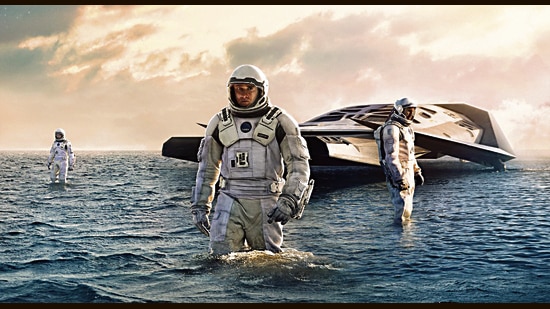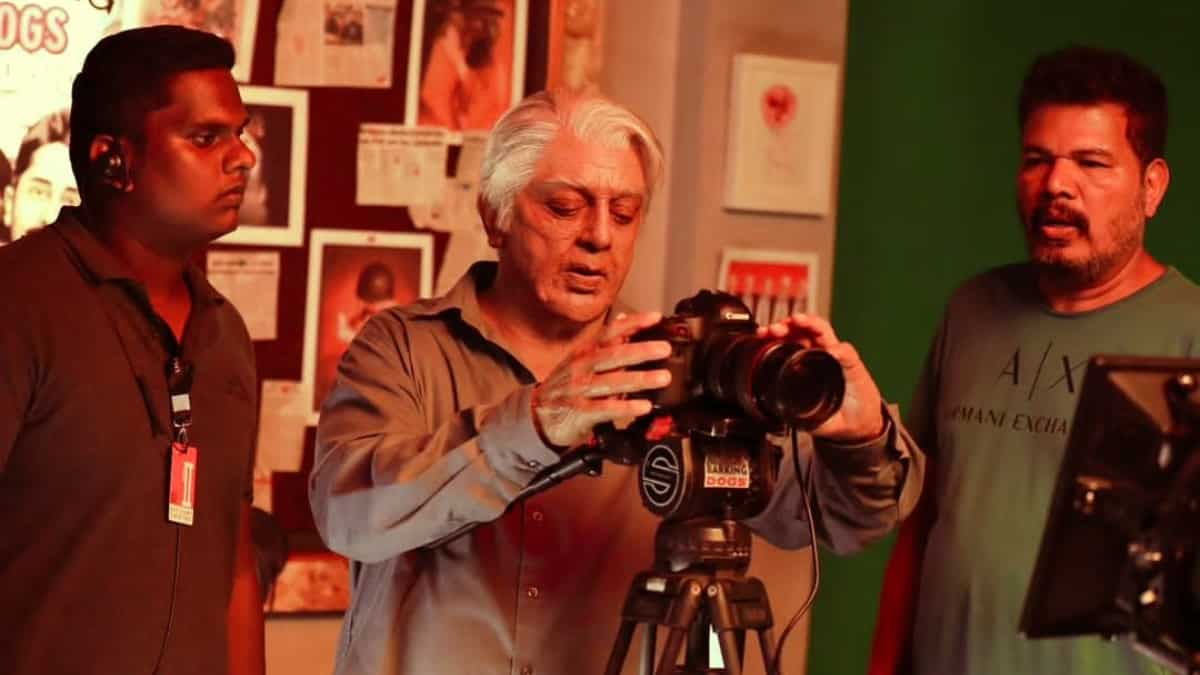
Heat and rust: Mridula Ramesh writes on the red sand desert in Tamil Nadu
1 month ago | 20 Views
The desert was unbelievably red with “chilli-powder sand”, as a young man in our group put it. Like most of us, I had thought that the Thar desert held the only dunes in India. So I was thrilled to come upon this weird beauty in my own backyard, near Tirunelveli in southern Tamil Nadu.
Teri Kaadu (Waste Forest, as the locals called it) is spread over 500 sq km and is a vast expanse of undulating red sands that are constantly shifting with the southwest winds. Based on their location, they are further classified into the Inland (next to the Western Ghats), Near Coastal and Coastal (which occur up to 15 km from the coast) Teri.
How did this desert come to be? Our local guide told us these sands had been carried here by the winds from further inland. I later learnt that the real story is far more layered.
Jayangonda Perumal, scientist and professor at the Wadia Institute of Himalayan Geology, who studied and dated these sands, says the desert came into being thousands of years ago. About 20,000 years ago, during the last glacial maxima, sea levels were about 100 metres lower than they are today. This exposed the sea shelf, a rich source of sand and sediment. The winds of the retreating monsoon blowing diagonally from the Bay of Bengal into the eastern coast of India, carried the sands from the sea shelf here, to create the dunes.
Then, the climate changed. The winter monsoon began to strengthen about 15,000 years ago, and the rivers powered by this monsoon began carrying more silt down from the nearby mountains, shaping the land into what is today the Inland Teri. Nearer the coast, the stronger monsoon winds were depositing sands from the sea, and so, fed by sand from river and sea, the dunes grew.

Then, between 11,000 and 5,000 years ago, the summer monsoon became more powerful and sea levels began to rise. During this period of fluctuating arid and humid climate, the coastal dunes began to take the shape they bear today, and began to redden as the iron-rich heavy minerals in the sand were leached by streams, rainwater and groundwater, and then oxidised. Perumal says the fluctuating climate played a key role in the relative rapidity of the reddening.
Clearly, when we understand the whispers of the sands, we begin to understand our own past.
Less than 15 km northwest of the red desert, on the banks of the river Thamirabarani, lies the Iron Age megalithic site of Adichanallur. Excavations led by German antiquarian Friedrich Jagor in 1876 found burial urns containing skeletons and a “considerable number of iron weapons and implements” here, which he of course carted away to Berlin. More than a century later, the Archaeological Survey of India (ASI), under T Sathyamurthy, then superintending archaeologist of the Chennai Circle, discovered over 80 skeletons at the site. Dating these skeletons showed that Adichanallur was at least 3,000 years old. The latest excavation by T Arun Raj, director of the Pandit Deendayal Upadhyaya Institute of Archaeology in Noida, found 91 burial urns along with gold ornaments, copper utensils and a horde of iron weapons.


Raj says that, using the Accelerator Mass Spectrometry method, rice and millet husks recovered from the urns were dated to 1400 BCE. With less than 2% of the site excavated, Adichanallur has more secrets to share. Already, many have remarked on the multi-racial profile of the skulls: some were Caucasoid, others Negroid, and many of possible Mongoloid origin. Was this then a burial ground for foreigners?
Korkai, an unremarkable village today, lies 20 km east of the burial urns and about 7 km from the present-day seashore. But historians believe that it could be the Kolkhoi of Greek records, a bustling centre of world trade. Indeed, the Greeks referred to the Gulf of Mannar as the Kolkhic Gulf. More evidence comes from Sangam-era poetry, written 2,000 years ago, which compares Korkai’s famous pearls with the teeth of a beautiful woman.
How did a bustling city become an unremarkable village? A study of satellite imagery reveals that the river has shifted south repeatedly. Indeed, it poured so much silt (oh the trade-off between agricultural productivity and port operations!) into this area that it literally pushed the sea back. The past two millennia have seen land’s end move forward by several km. And so, over centuries, Korkai became landlocked and trade shifted to Kayal, about 8 km to the south-east.
By the time Marco Polo came calling in the 13th century, “Cail” was a “great and noble city”, a port of call for ships from Hormuz, Aden and Arabia. “Here, no horses are bred,” he wrote. And so, he added, the wealth of the country is spent in importing about 2,000 horses a year. Indeed, on the wall of the nearby temple of Tirukurungudi is a frieze that shows horses and camels being traded.

Alas, the silt (“thamirabarani” is literally “copper-coloured river”)! The sea was pushed away from Kayal too. European traders shifted base to the more stable Tuticorin, 22 km to the north.
Climate, working through sand and water, has always shaped our story. Ancient Indians understood this, and built structures that accounted for the flow of sand and water. There is a still-functioning horseshoe-shaped check dam in one of the rivers of the region, that takes advantage of the river’s shape, seasonal water flow and sedimentation patterns, and feeds the tanks of this dry land. Today, we try to reshape sand and water through colonially inspired dams with mixed success. Consider the fate of the Sundarbans delta where the sea is overtaking land because, among other things, there is not enough silt coming through, in part due to the many dams and barrages on the rivers feeding the delta.
The colonial frenzy to reshape is ubiquitous in the region today. The Teri is being lost, in part to trees being planted on it. The Gazetteer lauds the efforts of then collector EB Thomas, who as early as 1848 was planting palm trees here, to prevent the Teri from spreading. Parts of it became a forest reserve. When we visited, we saw neem and cashew being planted, with an occasional palm peeking through.
The children in our group, as children are wont to do, began digging in the sand, and soon, red gave way to black; just a few inches below the surface, the sand became hotter and wetter. Indeed, the Gazetteer notes that the sands have a curious habit of trapping rainfall and channelling it downstream. If trees are planted here, what will happen to the farmers growing paddy and banana in those otherwise dry, downstream regions?
In my last column, I wrote of how the Gujarat government turned to the Prosopis juliflora in the 1960s, to hold back the Rann. At what point does the “cure” become worse than the disease?
Today, the region’s dry landscape is overrun by the water-guzzling invasive, P. juliflora. This land has little water to spare, and going by studies based on satellite imagery, the extent of “waste” land in the Thamirabarani basin has increased. In the river’s mouth, the mangroves are also suffering. Globally, pollution, salt pans and shrimp farms are threatening mangrove forests, and the Punnakayal (or New Kayal) mangroves are no exception.
Last December, the district received more than its annual quota of rain in a matter of days, a potent reminder that the climate is changing. Hundreds of tanks, some poorly maintained, breached their borders, their waters adding to the chaos. My textile factory, located in this district — this region is the land of my forefathers — flooded for the first time since its inception more than 60 years ago.
We had to travel to the Punnakayal beach by boat because the bridge connecting the beach with the mainland had been washed away in the deadly floods. Once there, our group went beachcombing. And while there were shells aplenty, I remember visiting these beaches as a child, and the shells being much bigger. Was that just nostalgic memory or was it because the ocean had acidified? Yet another fingerprint of rising carbon-dioxide levels?
The red sands and the forgotten ports are reminders of how climate has rewritten our story in the past. The climate is changing again, even as we weaken natural and traditional defences such as mangroves, hardy local shrubs, anicuts and tanks.
But my sense is that our bigger weakness in our battle with climate change is apathy. We look to faraway polar bears and water crises in other cities to drum up support for climate action, but neglect what is happening in our backyard.
In all my years here, I had never visited the Teri Kaadu or Adichanallur, nor appreciated their true meaning. Standing amid the red sands, I was reminded of the poetry of the great Vaishnavite seer Nammalvar, whose final resting place was next door to our hotel (it has his verse tastefully inscribed on its walls). Born blind, deaf and mute, the story goes that he crawled into a nook in a tamarind tree, as a child, and waited for the gods to appear. As they did, he sang:
“The two big worlds are within you, /
You hold the Chakra in your hand. /
Unbeknownst to me, you have entered into me /
You live within me, so who is bigger? You or me? /
Who can even tell?”
Nammalvar was reminding us that the truth we seek lies within. There are Adichanallurs and Teris in your part of the world, waiting to be discovered and to inspire. Waiting even as they fade.
(Mridula Ramesh is a climate-tech investor and author of The Climate Solution and Watershed)

















